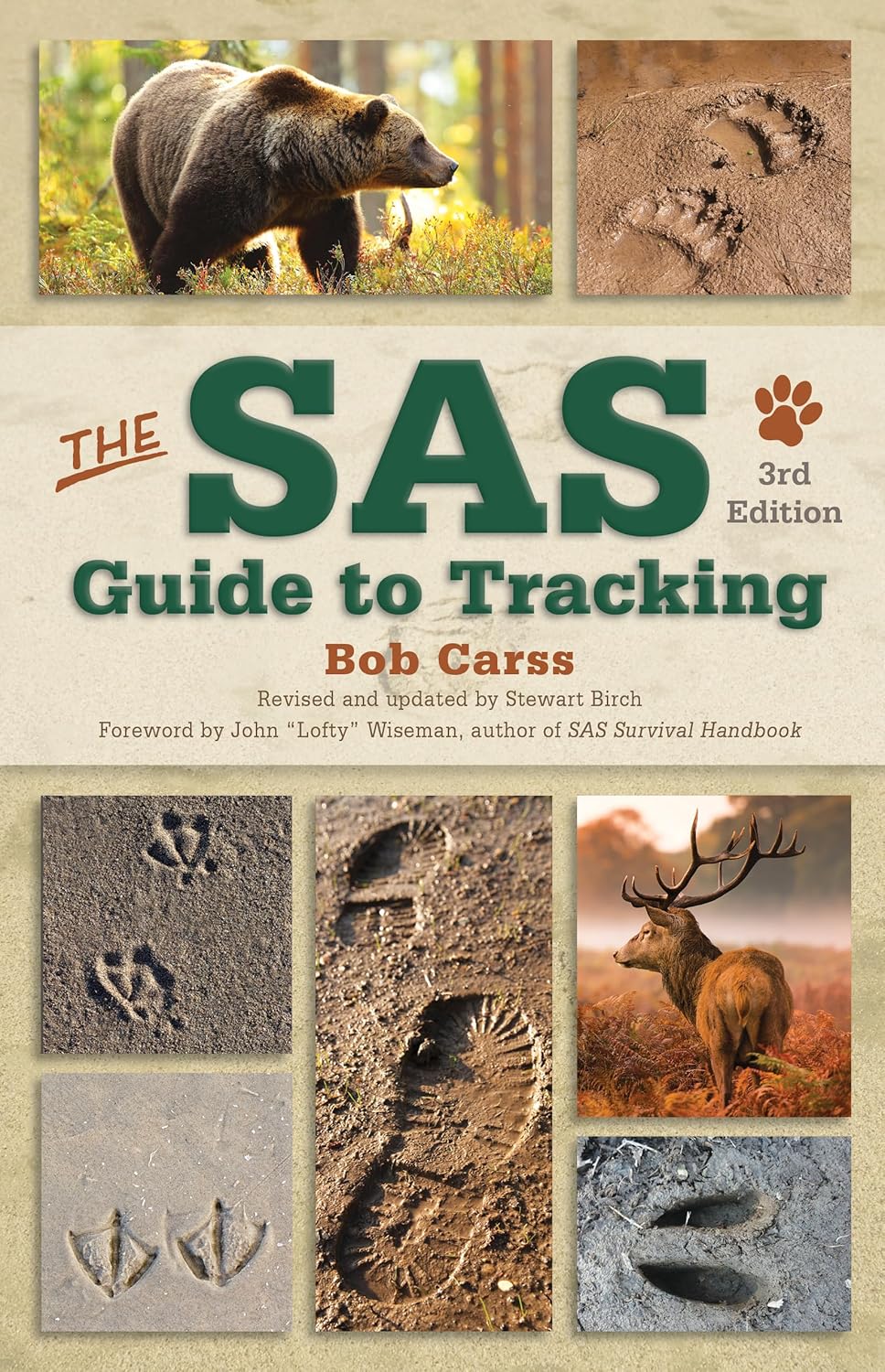Your cart is currently empty!
The SAS Guide to Tracking


Price: $22.95 – $19.30
(as of Dec 17,2024 15:15:53 UTC – Details)
From the Publisher




Stalking – Concealment
I believe that it is necessary for every potential tracker to learn the main principles of stalking before he can practice tracking in its wider sense… The stalker will always be aware of his background. He will move position in order to place himself against a backdrop that conceals him. It is not necessary always to conceal yourself behind cover. The backdrop is just as important. Observing incorrectly from behind can lead to discovery of the stalker far more quickly than being in front of the appropriate backdrop. The tracker should always be aware of being skylined. Apart from the obvious skyline, there are equally important intermediate skylines of which the tracker and stalker must be conscious. If carrying anything shiny, such as binoculars, camera, compass, or if wearing a watch or a ring, ensure that it is covered from the sun; otherwise it will point to the wearer’s position like a flashing mirror.


Animal Prints – Limb Structure Classification
For tracking purposes we are then interested in another [anatomical] classification of animals dependent upon the structure of their limbs. The first class comprises those animals whose legs are of about equal length. In this large class are included horses, cattle, pigs, deer, canines, and felines. The second class contains animals whose hind legs are much longer than their front legs, such as hares, rabbits, squirrels, and kangaroos. To the third class belong those animals whose legs are short in proportion to their bodies, such as otters, weasels, stoats, ferrets, mink, and martens. The fourth class includes those animals whose legs are very short in proportion to their bodies, and whose bodies are also very large such as badgers, hedgehogs, and porcupines.
Publisher : Lyons Press; 3rd edition (April 1, 2020)
Language : English
Paperback : 400 pages
ISBN-10 : 1493044303
ISBN-13 : 978-1493044306
Item Weight : 1.1 pounds
Dimensions : 5.58 x 1.14 x 8.51 inches
Customers say
Customers find the book informative and interesting. They appreciate its coverage of tracking in various environments, including desert, forest, jungle, marsh, and grassy areas. The book is described as an excellent resource for teaching and learning, covering the basics and progressing in a clear way. Readers also mention that the illustrations are clear and simple, which works well for boys.
AI-generated from the text of customer reviews
The SAS Guide to Tracking: Master the Art of Observation and Navigation
Tracking is a vital skill for survival in the wilderness, whether you’re hunting, hiking, or in a survival situation. The Special Air Service (SAS) are experts in tracking, using their keen observation skills and knowledge of nature to follow trails and locate targets.
Here are some key tips from the SAS on tracking:
1. Pay attention to details: When tracking, every small detail can provide valuable information. Look for footprints, broken branches, disturbed foliage, and other signs that indicate someone or something has passed through the area.
2. Practice stealth: When tracking, it’s important to move quietly and avoid making unnecessary noise. This will help you avoid alerting your target and give you a better chance of following their trail undetected.
3. Use all your senses: Tracking is not just about visual observation. Use your sense of smell and hearing to pick up on clues that may not be immediately visible. Animals, for example, leave distinct scents that can help you track them.
4. Study animal behavior: Understanding the behavior of the animals in the area can help you predict their movements and track them more effectively. Learn about the habits and habitats of the animals you are tracking to improve your chances of success.
5. Practice navigation skills: Tracking often involves following trails through unfamiliar terrain. Brush up on your map reading, compass skills, and navigation techniques to ensure you can find your way back to safety once you have completed your tracking mission.
By mastering the art of tracking, you can improve your chances of survival in the wilderness and become a more skilled outdoorsman. Follow these tips from the SAS to become a proficient tracker and hone your observation and navigation skills.
#SAS #Guide #Tracking


Leave a Reply